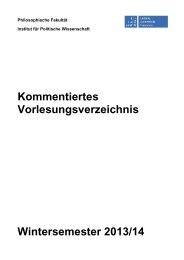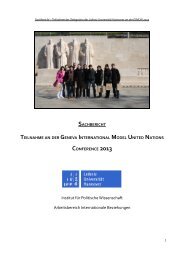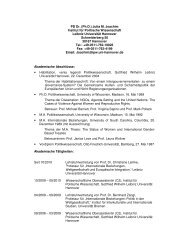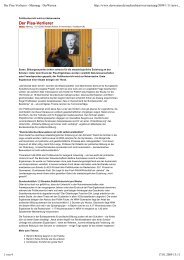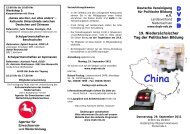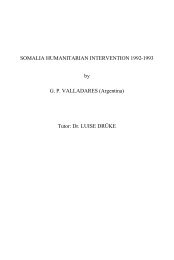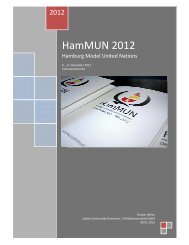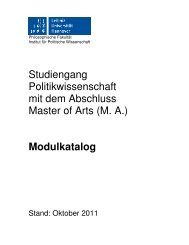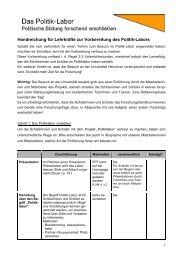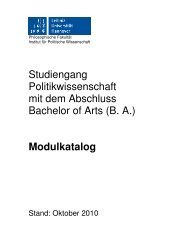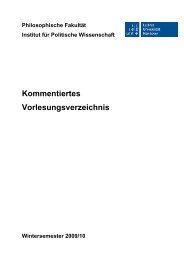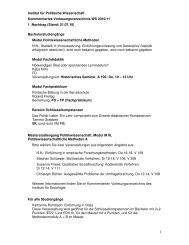Preventive Action for Refugee Producing Situations
Preventive Action for Refugee Producing Situations
Preventive Action for Refugee Producing Situations
Create successful ePaper yourself
Turn your PDF publications into a flip-book with our unique Google optimized e-Paper software.
224 Chapter 6<br />
grounds <strong>for</strong> developing innovative and daring approaches, which<br />
recall Dag Hammarskjold, moving preventive diplomacy into new<br />
lights and perspectives, written down in his 1992 "Agenda <strong>for</strong> Peace".<br />
Most noteworthy is the heavy demand on peace-keeping, peacemaking<br />
and peace building, which States still tend, however, not to follow up<br />
sufficiently with the necessary funding. An emerging combined<br />
approach of humanitarian, political and peace-keeping ef<strong>for</strong>ts bring<br />
new significance in refugee prevention work. The analysis of UN<br />
conflict prevention experience and perspective shows potentials but<br />
also limitations <strong>for</strong> preventing new and recurring refugee situations.<br />
Even though the mandate to maintain international peace and security<br />
is respected and undisputed, the procedures and facilities often depend<br />
on ad-hoc decisions and arrangements. This limits effectiveness and<br />
result.<br />
While during the Cold War the two super powers retained their<br />
sphere of influence through containment policies, often at the cost of<br />
refugees and displaced persons, political will of states remains the<br />
crucial ingredient <strong>for</strong> any action with preventive purpose.<br />
After long and intensive negotiations among interested<br />
governments during 1991, the General Assembly finally resolved to<br />
strengthen coordination of humanitarian action. States decided that a<br />
coordinator working directly under the Secretary-General was best<br />
suited to carry out this task, including undertaking mediation and<br />
conflict resolution ef<strong>for</strong>ts. Chapter four provides an initial assessment<br />
on the first few months of operation of the Department <strong>for</strong><br />
Humanitarian Affairs at UN Headquarters, which indicate the<br />
complexities involved. The unprecedented humanitarian crisis in<br />
Yugoslavia and Somalia, have no doubt placed unexpected challenges<br />
to the preventive actions of the United Nations system as a whole.<br />
It was the UN High Commissioner <strong>for</strong> <strong>Refugee</strong>s whom the<br />
Secretary-General appointed, however, to lead the operations in<br />
<strong>for</strong>mer Yugoslavia. Considering that there are more than three million<br />
refugees and displaced persons inside and outside the <strong>for</strong>mer<br />
Yugoslavia UNHCR was found most suited UN body to deal with the<br />
situation. The expertise and experience of UNHCR, gained over the<br />
last <strong>for</strong>ty years of existence, with the leadership of Mrs. Ogata in<br />
handling the crisis have earned her support and credibility worldwide.<br />
In this context concepts and activities on country of origin work have<br />
gained new momentum. The establishing of a new section specifically<br />
<strong>for</strong> this purpose is only one proof of it. An in-house early warning<br />
working group, operating since 1989, has also evolved into a more<br />
institutionalized mechanism: the UNHCR Early<br />
Concluding Remarks 225<br />
Warning Task<strong>for</strong>ce. Out of this activity is developing UNHCR's<br />
active participation in the United Nations interagency working group<br />
on early warning, established in 1991.<br />
<strong>Preventive</strong> protection, which the UN High Commissioner defines<br />
as prevention of circumstances which <strong>for</strong>ce people to leave as another<br />
aspect of solutions, would have been unthinkable even four years ago.<br />
Of course, <strong>for</strong> the time being, the concept and actions of preventive<br />
protection are understood essentially in the context of the situation in<br />
<strong>for</strong>mer Yugoslavia. Senseless war and killing naturally makes<br />
preventive protection a different option. Nevertheless, the notion is<br />
developing, allowing <strong>for</strong> application when circumstances permit. This<br />
in itself is progress compared to previous times, and could evolve<br />
eventually into a more broader acceptance and implementation<br />
elsewhere. <strong>Action</strong> in the country of origin to address circumstances of<br />
cross border movements is thus slowly emerging as an accepted<br />
practice.<br />
The issue of sovereignty is slowly gaining new light and<br />
interpretation in the direction which was already indicated in the first<br />
edition. The states of the international community can no longer<br />
ignore the victims of specific practices (which amount to persecution<br />
and massive human rights violations) only because they are still in<br />
their countries of origin. The call to respect human rights and<br />
humanitarian law can no longer be considered merely as lipservice,<br />
but rather figures now prominently on international agendas. That the<br />
Security Council is functioning again, and able to adopt such<br />
resolutions as concerning Iraq and <strong>for</strong>mer Yugoslavia, would have<br />
been unthinkable just a few years ago. They did perhaps not stop<br />
refugee movements. But is is unclear what exactly would have<br />
happened without them. Evidence shows, however, that without them<br />
the human suffering could have been much worse.<br />
Of course, there is still war in several parts of the world.<br />
<strong>Preventive</strong> action, now and in the next few years, is likely to be more<br />
effective, only in small specific situations. It is only known when<br />
preventive action has not prevented refugees and war. Seldom are<br />
reports publicly available of preventive actions' failures or successes.<br />
Still, the approach to prevent rather than to cure is gaining acceptance<br />
as the most desirable course of action. Consequently, the preventive<br />
course is advancing towards a more proactive approach to promote<br />
human rights, democracy and peace. Preventing circumstances <strong>for</strong>cing<br />
people to flee is a part of mat process.



